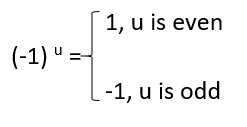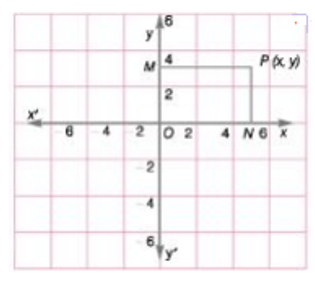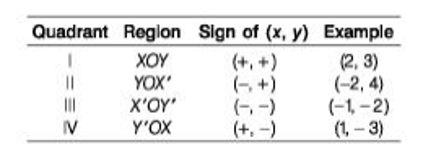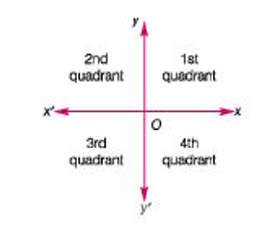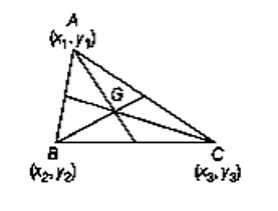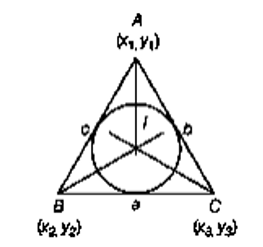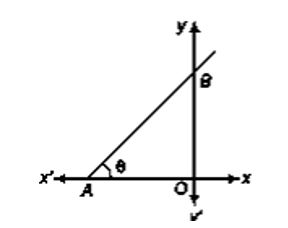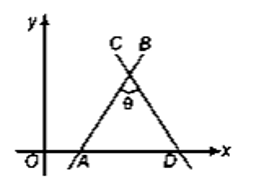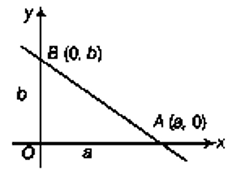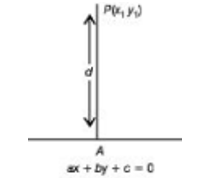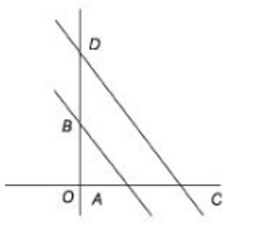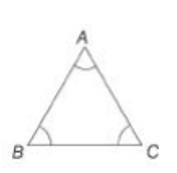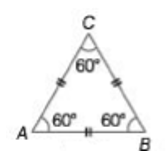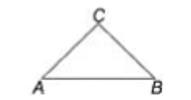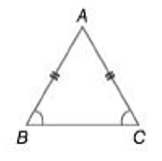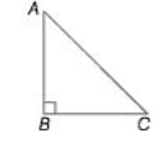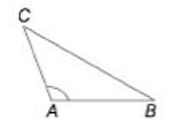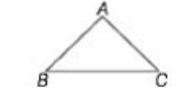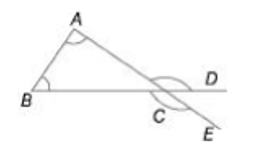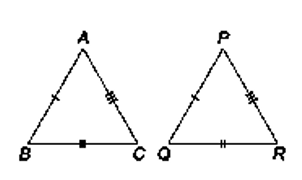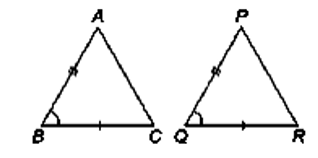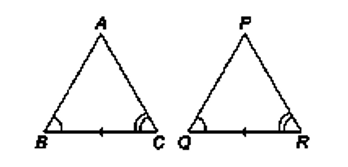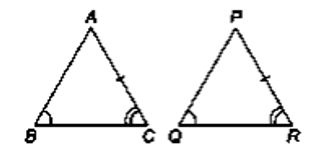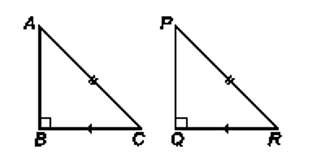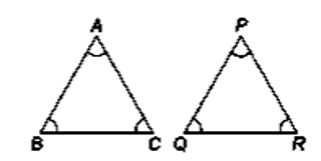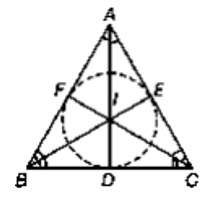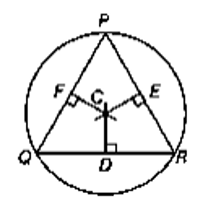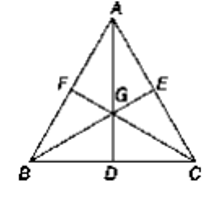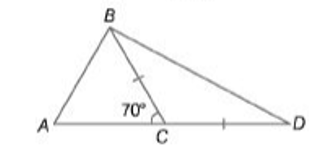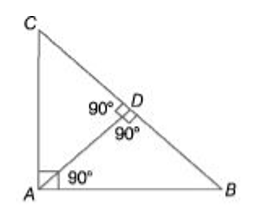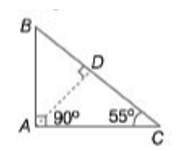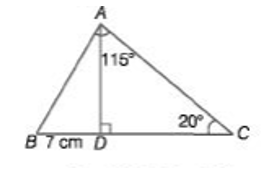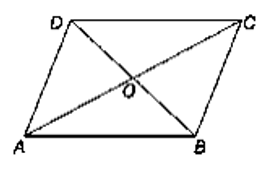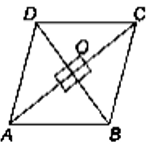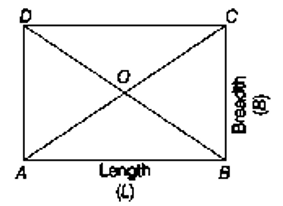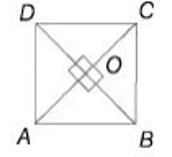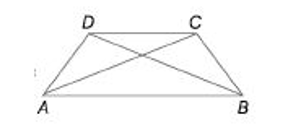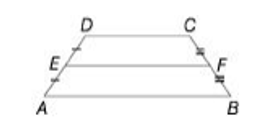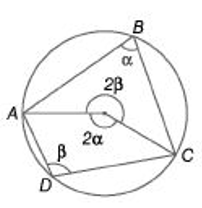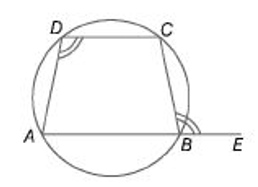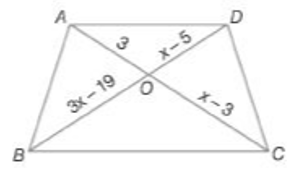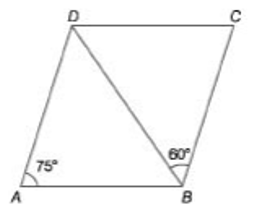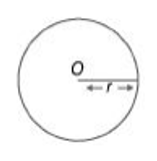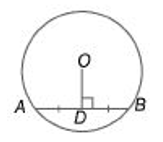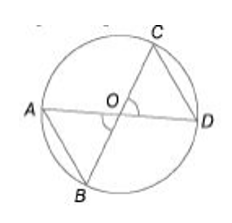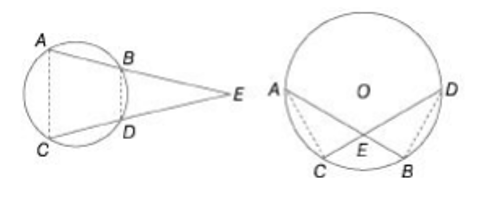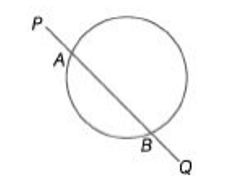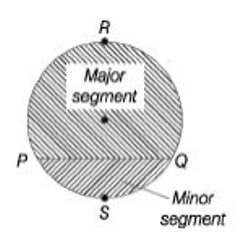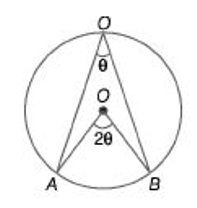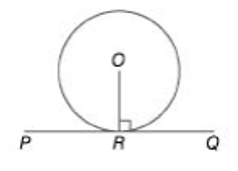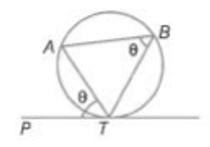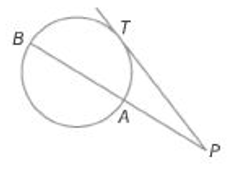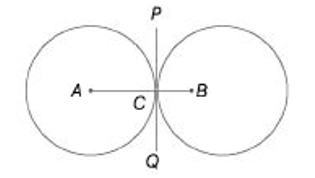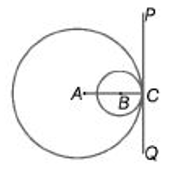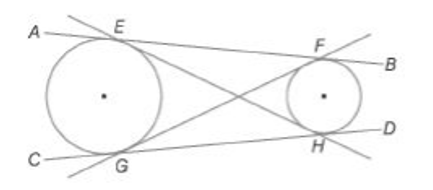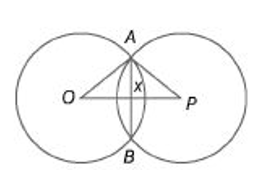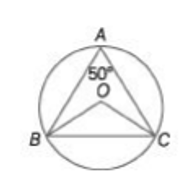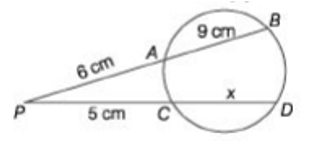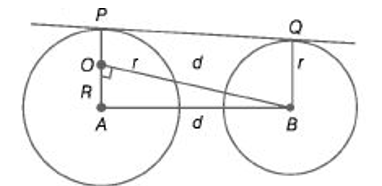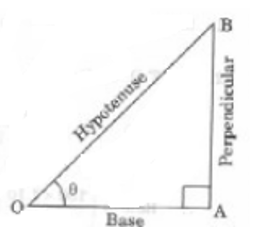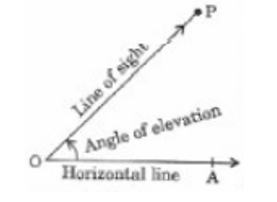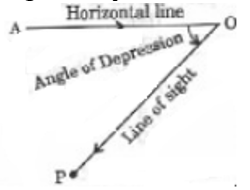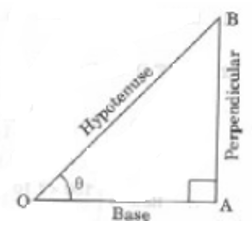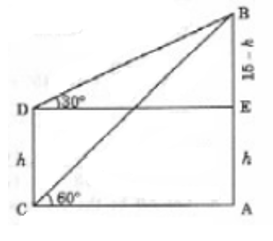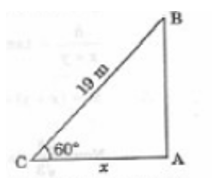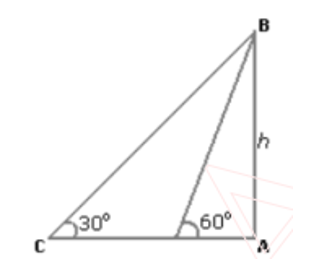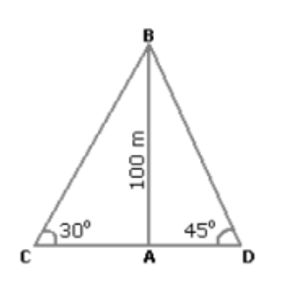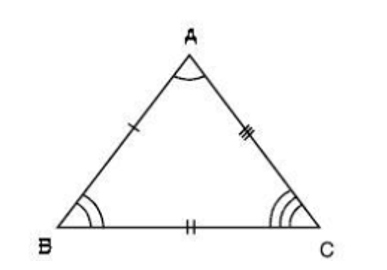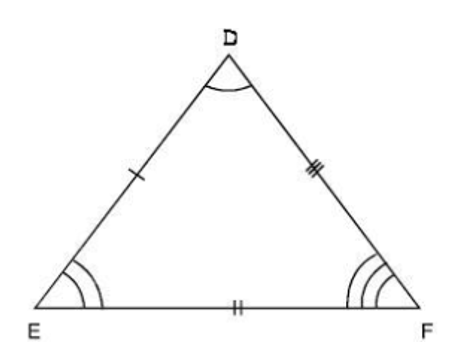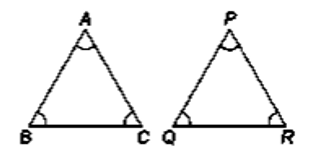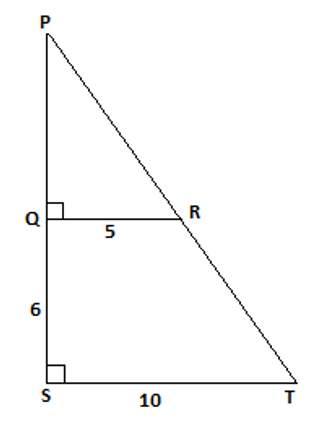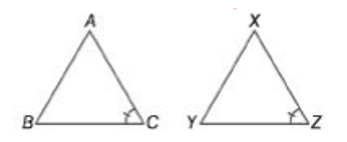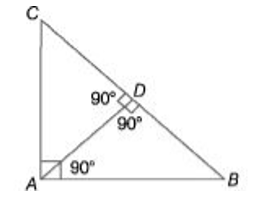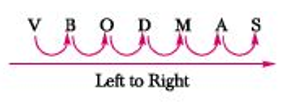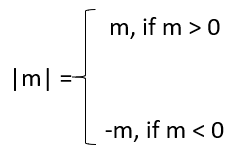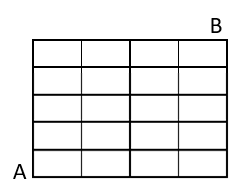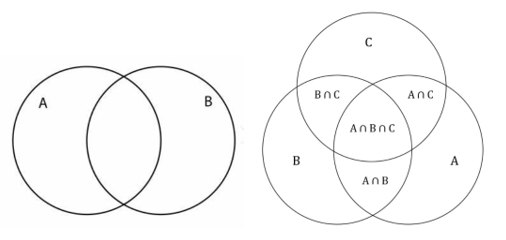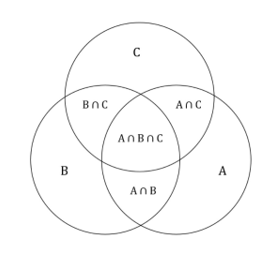- In mathematical expression, which includes division and multiplication of decimal values of large number, it becomes quite complicated to solve these expressions.
- So, to reduce this complexity we use approximation method. In approximation method, we need not calculate the exact value of an expression, but we calculate the nearest (round off) values.
- When we use approximation method, then final result obtained is not equal to the exact result, but it is very close to the final result (either a little less or little more).
Basic Rules to Solve the Problems by Approximation:
Rule1:
To solve the complex mathematical expression, take the nearest value of numbers given in the expression.
Rule 2:
To multiply large number, we can take the approximate value (round off) of numbers by increasing one number and decreasing the other accordingly, so that the calculation is eased.
Rule 3:
When we divide large number with decimals, then we can increase or decrease both numbers accordingly.
Rule 4:
To find the percentage of any number, we can use the following shortcut methods
To calculate 10% of any number, we simply put a decimal after a digit from the right end.
To calculate 1% of any number, we simply put a decimal after two digits from right end.
To calculate 25% of any number, we simply divide the number by 4.
Examples:
- 89% of (599.88 + 30 x 400) + 50 =?
Solution: &space;+&space;50&space;=?)

2. 
Solution: 393 x 197 + 5600 


3. (9.5)2 =?
Solution: (9.5)2 = 90.25 = 90
4. 183.5 ÷ 273.5 x 63.5 = 2?
Solution: 183.5 ÷ 273.5 x 63.5 = 2?

5. 125.009 + 69.999 + 104.989 =?
Solution:
125.009 + 69.999 + 104.989 =?
Each value is approximated to nearest whole number
=> ? =125 + 70 + 105
=> ? = 300
- Direct Proportion:
Two quantities are said to be directly proportional, if on the increase (or decrease) of the one, the other increase (or decreases) to the same extent.
Example1: Cost is directly proportional to the number of articles (More Articles, More Cost)
Example2: Work done is directly proportional to the number of men working on it. (More Men, More work)
- Indirect Proportion:
Two quantities are said to be indirectly proportional, if on the increase of the one, the other decreases to the same extent and vice-versa.
Example1: The time taken by a car in covering a certain distance is inversely proportional to the speed of the car.
(More speed, less is the time taken to cover a distance)
Example2: Time taken to finish a work is inversely proportional to the number of persons working at it.
(More persons, less is the time taken to finish a job)
Note: In solving questions by chain rule, we compare every item with the term to be found out.
Examples:
- If the price of 6 toys is $ 264.37, what will be the approximate price of 5 toys?
Solution: Let the required price be $ x.
Then, less toys, less cost (Direct Proportion)
Therefore, 6: 5:: 264.37: x

2. 36 men can complete a piece of work in 18 days. In how many days will 27 men complete the same work?
Solution: Let the required number of days be x.
Then, less men, more days (Indirect proportion)
Therefore, 27: 36:: 18: x

3. In a dairy farm, 40 cows eat 40 bags of husk in 40 days. In how many days one cow will eat one bag of husk?
Solution:
- Let the required number of days b x.
- Less cows, More days (Indirect Proportion)
- Less bags, Less days (Direct Proportion)
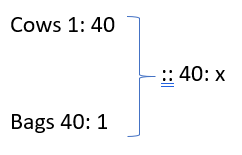
Therefore, 1 * 40 * x = 40 * 1 * 40
 x = 40
x = 40
- If the cost of x meters of wire is d dollars, then what is the cost of y metres of wire at the same rate?
Solution:

5. If  of a cistern is filled in 1 minute, how much more time will be required to fill the rest of it?
of a cistern is filled in 1 minute, how much more time will be required to fill the rest of it?
Solution:
- Let the required time be ‘x’ seconds.
- Part filled =
 Remaining part
Remaining part 
- Less part, Less time (Direct proportion)


To start a big business or an industry, a large amount of money is needed. It is beyond the capacity of or two persons to arrange such a huge amount. However, some persons associate together to form a company. They, then, draft a proposal, issue a prospectus (in the name of the company), explaining the plan of the project and invite the public to invest money in this project. They, thus, pool up the funds from the public, by assigning them shares of company.
Important Formulae:
- Stock-capital: The total amount of money needed to run the company is called the stock-capital.
- Shares or Stock: The whole capital is divided in to small units, called shares or stock.
For each investment, the company issues a share-certificate, showing the value of each share and the number of shares held by a person.
The person who subscribes in shares or stock is called a shareholder or stock holder.
- Dividend: The annual profit distributed among shareholders is called dividend.
Dividend is paid annually as per share or as a percentage.
- Face Value: The value of a share or stock printed on the share-certificate is called its Face Value or Nominal Value or Par value.
- Market Value: The stocks of different companies are sold and bought in the open market through brokers at stock-exchanges. A share (or stock) is said to be:
- At premium, if its market value is more than its face value
- At par, if its market value is the same as its face value
- At discount or Below par, if its market value is less than its face value.
Thus, if a $100 stock is quoted at a premium of 18, then market value of the stock = $(100 + 18) = $ 118
Likewise, if a $ 100 stocked at a discount of 5, then the market value of the stock = $ (100 – 5) = $ 95
- Brokerage: The broker’s charge is called brokerage
- When stock is purchased, brokerage is added to the cost price.
- When stock is sold, brokerage is subtracted from the selling price.
NOTE:
- The face value of a share always remains the same
- The market value of a share changes from time to time
- Dividend is always paid on the face value of a share.
- Number of shares held by a person

Examples:
- Find the annual income derived from $ 2500, 8% stock at 106.
Solution: Income from $ 100 stock = $ 8
Income from $ 2500 stock = $ ) = $ 200
= $ 200
2. A man buys $ 25 shares in a company which pays 9 % dividend. The money invested is such that it gives 10% on investment. At what price did he buy the shares?
Solution: Suppose he buys each share for $ x.
&space;=&space;(x&space;*&space;\frac{10}{100}))
 x = 22.50
x = 22.50
 Cost of each share = $ 22.50
Cost of each share = $ 22.50
3. A man invests in a 16% stock at 128. The interest obtained by him is?
Solution: By investing $ 128, income derived = 16

Therefore, interest obtained = 12.5%
4. To produce an annual income of $ 1200 from 12% stock at 90, the amount of stock needed is:
Solution: For an income of $ 12, stock needed = $ 100

5. A invested some money in 10% stock at 96. If B wants to invest in an equally good 12% stock, he must purchase a stock worth of:
Solution: For an income of $ 10, investment = $ 96

4 Speed, Time and Distance
N/A
Speed
The rate at which a body or an object travels to cover a certain distance is called speed of that body.
Time
The duration in hours, minutes or seconds spent to cover a certain distance is called the time. Distance
The length of the path travelled by any object or a person between two places is known as distance.
Relation between Speed, Time and Distance:
Speed is the distance covered by an object in unit time. It is calculated by dividing the distance by the time taken.


Distance = Speed x time
Formulae:
- If speed is kept constant, then the distance covered by an object is proportional to time.
Distance  Time (speed constant) or
Time (speed constant) or 
2. If time is kept constant, then the distance covered by an object is proportional to speed.
Distance  Speed (speed constant) or
Speed (speed constant) or 
3. If distance is kept constant, then the speed covered by a body is inversely proportional to time.
Speed  (distance constant) or S1 T1 = S2 T2 = S3 T3 = ….
(distance constant) or S1 T1 = S2 T2 = S3 T3 = ….
4. When two bodies A and B are moving with speed a miles/h and b miles/h respectively, then the relative speed of two bodies is
- (a + b) miles/h (if they are moving in opposite direction)
- (a - b) miles/h (if they are moving in same direction)
5. When a body travels with different speeds for different durations, then average speed of that body for the complete Journey is defined as the total distance covered by the body divided by the total time taken to cover the distance.
Average speed
Note: If a body covers a distance D1 at S1 miles/h, D2 at S2 miles/h, D3 at S3 miles/h and so on up to Dn at Sn, then Average speed = 
Examples:
- A train covers a distance of 200 miles with a speed of 10 miles/h. What time is taken by the train to cover this distance?
Solution: Given, speed = 10 miles/h and distance = 200 miles

Therefore, required time = 20 h
2. A person covers a distance of 12 miles, while walking at a speed of 4 miles/h. How much distance he would cover in same time, if he walks at a speed of 6 miles/h?
Solution: Given that, D1 = 12 miles, S1 = 4 miles/h, D2 =? and S2 = 6 miles/h
Since, the time is kept constant.
According to the formula, 

 D2 = 18 miles
D2 = 18 miles
Therefore, the person will cover 18 miles.
3. A person covers a certain distance with a speed of 18 miles/h in 8 min. If he wants to cover the same distance in 6 min, what should be his speed?
Solution: We know that, Speed = 



4. Two trains are running in the same direction. The speeds of two trains are 5 miles/h and 15 miles/h, respectively. What will be the relative speed of second train with respect to first?
Solution: We know that, if two trains are running in same direction, then difference in speeds is the required relative speed.
Required relative speed = 15 - 5 = 10 miles/h
5. A person covers a distance of 20 miles by bus in 35 min. After deboarding the bus, he took rest for 20 min and covers another 10 miles by a taxi in 20 min. Find his average speed for the whole journey?
Solution: Total distance covered = (20 + 10) miles = 30 miles

According to the formula, Average speed = 
So, the average speed of the person for the whole journey is 24 miles/h
5 Races and Games of Skill
N/A
A race or a game of skill includes the contestants in a contest and their skill in the concerned contest/game.
Important Terms
Race
A race is a contest of speed in running, driving, riding, sailing or rowing.
Race Course
The ground/path on which a contest is organised in a systematic way, is called a race course. Starting Point
The exact point/place from where a race begins, is called starting point.
Start
If two persons A and B are contesting a race and before the start of the race, A is at the starting point and B is ahead of A by 20 m, then it is said that A gives B a start of 20 m.
Finishing Point
The exact point/place where a race ends, is known as finishing point.
Winning Point/Goal
A person who reaches the finishing point first, is called the winner.
Note
For a winner, finishing point is as same as the winning point/goal
Dead Heat Race
A race is said to be a dead heat race, if all the contestants reach the finishing point exactly at the same time.
Game
A game of 100 means that the contestant who scores 100 points first, is declared the winner.
Some Facts about Race
For Two Contestants A and B
- If A beats B by x m, then

Distance covered by A (winner) = L m Distance covered by B (loser) = (L - x) m
2. If B starts from x m ahead of A (or A gives B a start of x m), then

A start from M and B starts from Z. Distance covered by B = (L - x) m
3. If A beats B by T s, then

A and B both start from point M.
Time taken by A (winner) = Time taken by B (loser) - T
It means that A completes the race in T s less time than that of B
4. If B starts the race T s before the time A starts (or if A gives B a start of T s), then

In such case, we say that A starts T s after the time B starts. 5. If both of the contestants get at the finishing point at the same time, then Difference in time of defeat = 0; Difference in distance of defeat = 0
Examples:
- In a game of 100 points, A scores 100 points, while B scores only 75 points. In this game, how many points can A give to B? S
Solution: Given
- Score of A = 100 points;
- Score of B = 75 points
... A can give (100 - 75) = 25 points to B
- In a 100 m race, Jack runs at the speed of 4 km/h. Jack gives Bob a start of 4 m and still beats him by 15 s. Find the speed of Bob?
Solution:
- Time taken by Jack to cover 100 m =

- Therefore, Bob covers (100 – 4) = 96 m in (90 + 5) = 105 s
So, Bob’s speed = 
3. A 10 km race is organised at 800 m circular race course. P and Q are the contestants of this race. If the ratio of the speeds of P and Q is 5: 4, how many times will the winner overtake the loser?
Solution: Given Speed of P: Speed of Q = 5: 4
- Time taken by P to cover 5 rounds = Time taken by Q to cover 4 rounds
- Distance covered by P in 5 rounds

- Distance covered by Q in 4 rounds

- In 5 rounds, P will overtake Q every time.
- It means that after covering 4 km, P will overtake Q one time.
Therefore, after covering 10 km P will overtake 
4. In a 200 m race, A can beat B by 50 m and B can beat C by 8 m. In the same race, A can beat C by what distance?
Solution:
- From given data we can write, A: B = 200: 150 and B: C = 200: 192
&space;=&space;(\frac{200}{150}&space;\times&space;\frac{200}{192})&space;=&space;\frac{200}{144})
- So, A beats C by (200 – 144) m = 56 m
5. In a game of billiards, A can give 20 points in the game of 120 points and he can give C 30 points in the game of 120 points. How many points can B give C in a game of 90?
Solution:
- If A scores 120 points, then B scores 100 points and C scores 90 points.
- When B scores 100 points, then C scores 90 points.
- When B scores 90 points, then C scores
) points = 81 points.
points = 81 points.
- Therefore, B can give C, 9 points in a game of 90.
6 Problems Based on Trains
N/A
Problems based on trains are same as the problems related to 'Speed, Time and Distance' and some concepts of 'Speed, Time and Distance' are also applicable to these problems.
The only difference is that the length of the moving object (train) is taken into consideration in these types of problems
Rules:
Rule 1: Speed of train (S) = }{Time\&space;taken(t)})

Here, unit of speed is m/s or km/h
- a km/h
&space;m/s)
- a m/s
&space;km/h)
Rule 2:
The distance covered by train in passing a pole or a standing man or a signal post or any other object (of negligible length) is equal to the length of the train.
Rule 3:
If a train passes a stationary object (bridge, platform etc;) having some length, then the distance covered by train is equal to the sum of the lengths of train and that particular stationary object which it is passing
Rule 3:
If two trains are moving in opposite directions, then their relative speed is equal to the sum of the speeds of both the trains.
Rule 4:
If two trains are moving in the same direction, then the relative speed is the difference of speeds of both trains.
Rule 5:
If two trains of lengths x and y are moving in opposite directions with speeds of u and v respectively, then time taken by the trains to cross each other is equal to 
Rule 6:
If two trains of lengths x and y are moving in the same direction with speeds of u and v respectively, then time taken by the faster train to cross the slower train is equal to 
Rule 7:
If two trains start at the same time from points P and Q towards each other and after crossing each other, they take t1, and t2 time in reaching points Q and P respectively, then (P's speed): (Q's speed) = t1: t2
Examples:
- A train takes 9 s to cross a pole. If the speed of the train is 48 km/h, then length of the train is
Solution:
- Let the length of the train be x m.
- Now, speed = 48 km/h

- Train takes 9 s to cross a pole.
- Therefore, length of train(x) = speed x time

2. The distance between two stations P and Q is 145 km. A train with speed of 25 km/h leaves station at 8:00 am towards station Q. Another train with speed of 35 km/h leaves station Q at 9:00 am towards station P. Then, at what time both trains meet?
Solution:
- First train leaves at 8:00 am and second at 9:00 am.
- So, first train i.e., from P to Q has covered 25 km distance in 1 h.
- So, distance left between the station =145-25 = 120 km
- Now, trains are travelling in opposite directions
- So, relative speed = 25 + 35 = 60 km/h
- Time taken to cover 120 km

Therefore, the time at which both the trains will meet, is 2 h after second train left i.e., 9:00 am + 2h = 11:00 am
3. A train A is 180 m long, while another train B is 240 m long. A has a speed of 30 km/h and B's speed is 40 km/h. If the trains move in opposite directions, find when will A pass B completely?
Solution: Let the total distance = x + y = 180 + 240 = 420 m
Active speed &space;\times&space;\frac{5}{18}&space;=&space;\frac{70\&space;\times&space;\&space;5}{18}&space;m/s)
Therefore, required time 
4. Train A crosses a pole in 25 s and train B crosses the pole in 1 min 15 s. Length of train A is half the length of train B. What is the ratio between the speeds of A and B, respectively?
Solution:
- Let the lengths of trains A and B be l and 2l respectively
- When a train crosses a pole, it covers the distance equal to its length
Therefore, required ratio of speeds 
5. A train overtakes two persons walking along a railway track. The first one walks at 4.5 km/h and the other one walks at 5.4 km/h. The train needs 8.4 s and 8.5 s respectively, to overtake them. What is the speed of the train, if both the persons are walking in the same direction as the train?
Solution: Speed of 1st person = 4.5 km/h &space;m/s&space;=&space;\frac{5}{4}&space;m/s&space;=&space;1.25&space;m/s)
Speed of 2nd person = 5.4 km/h &space;m/s&space;=&space;\frac{3}{2}&space;m/s&space;=&space;1.5&space;m/s)
Let the speed of the train be k m/s
Then, (k – 1.25) x 8.4 = (k – 1.5) x 8.5
8.4k – 10.5 = 8.5k – 12.75
0.1k = 2.25
k = 22.5
Therefore, speed of train &space;=&space;81&space;km/h.)
7 Escalator-Time, Speed and Distance
N/A
Escalator problems are similar to the upstream and downstream problems.
Here the escalator moves in both the directions but in a stream, the direction of flow of water is constant.
These escalator questions are bit confusing compared to other topics in time, speed and distance.
Escalator:
- An escalator is a moving stair, i.e., it moves continuously up or down.
- The total number of stairs are fixed in an escalator always.
- The distance is said in terms of the number of steps.
- The number of steps taken by the individual and the escalator is equal to the total number of steps on the escalator.
Important Things:
- If we are moving with escalator, we have to climb less steps as escalator will push us forward on its own.
- If we are moving against the escalator, we have to climb more steps as escalator will pull us back on its own.
Moving with escalator:
The total number of steps will be the addition of the two (individual and escalator) in case the individual is moving in the same direction as that of the escalator.
Total number of steps = steps climbed by individual + steps of escalator
Moving against escalator:
The total number of steps will be the subtraction of the two (individual and escalator) in case the escalator and the individual are moving in the opposite direction.
Total number of steps = steps climbed by individual - steps of escalator
Note:
The time taken by the individual to climb up or down the escalator is equal to the time for which escalator is moving.
Common Questions based on escalator:
- Speed scenario
- Steps scenario
- Time scenario
Examples:
- A boy is walking down a downward-moving escalator and steps down 15 steps to reach the bottom. Just as he reaches the bottom of the escalator, he remembers that he forgot his wallet in a shop on the floor above. He runs back up the downward moving escalator at a speed 3 times that which he walked down. He covers 45 steps in reaching the top. How many steps are visible on the escalator when it is switched off?
Solution:
Given that boy runs back at a speed 3 times that which he walked down
Let the boy’s speed with the escalator = s
And boy’s speed against the escalator = 3s
And speed of escalator = u
We know that total number of steps in both cases are equal.
15 + (15/s) times u = 45 – (45/3s) times u
(30/s) times u = 45 -15
(1/s) times u = 30/30 = 1
Placing the value in any of the equation = 15 + 15 = 30
Number of steps visible on the escalator when it is switched off = 30
- A lady walks up on an escalator which is moving up at a rate of one step per second, thirty steps bring her top. The other day she goes up at three steps per second, reaching the top in 45 steps. Find the number of steps in the escalator?
Solution: The time taken on two days are 30s and 15s which are in ratio 2: 1.
So, the steps thrown out by the escalator are in ratio 2: 1
 30 + 2x = 45 + x
30 + 2x = 45 + x
 x = 15
x = 15
Therefore, total steps = 30 + 2(15) = 60
- Richard takes 60 seconds to walk up on an upward moving escalator but he takes 90 seconds to walk up on a downward moving escalator. Calculate the time that Richard will take to walk up if the escalator is not moving?
Solution:
Let us consider the speed of Richard be u
Let us consider the speed of escalator be v
As the distance is constant, the three speeds i.e., u + v, u, u – v will be in arithmetic progression.
Since time is inversely proportional to speed, the time taken in each case will be in harmonic progression.
Calculating the harmonic mean of the given time taken = the time taken by Richard to walk up if the escalator is not moving = (2 * 60 * 90)/ (60 + 90) = 10800/150 = 72
- Bob is going up the escalator. It takes Bob 60 seconds to walk up the escalator which is moving upwards and 180 seconds to walk up the escalator which is moving downwards. Calculate the time taken by Bob to climb the escalator which is stationary.
Solution:
- Let speed of Bob be "s" steps per second.
- Let speed of escalator be "e" steps per second.
- No. of steps (N)= 60s + 60e
Since Bob is moving upwards, 90e will be added
Since Bob is moving downwards, 150e will be subtracted
By equating the number of steps,
60s + 60e = 180s -180e
s = 2e
- N = 60s + 60e = 60s + 60(s/2) = 60s + 30s = 90s
- Time taken when escalator is stationary = 90s/s = 90 seconds
N=80a+80x= 80a+16a=96a Time taken when the escalator is stationary= 96a/a= 96seconds.
- An escalator moves downward from first floor to ground floor at a constant rate. When the escalator is turned off, Harry takes 90 steps to descend from first floor to ground floor. When the escalator is turned on, Harry needs only 40 steps to descend from first to ground floor. If Harry begins at ground floor and walks upward, against the escalator’s downward movement, how many steps will he need to take to reach first floor Assuming that Harry walks at a constant rate in all scenarios.
Solution:
 Let the distance from first to ground floor = d
Let the distance from first to ground floor = d
 Let speed be u with which Harry moves when escalator is still
Let speed be u with which Harry moves when escalator is still
 Let the speed be v with which escalator moves up or down
Let the speed be v with which escalator moves up or down
When escalator is stand still, he needs 90 steps
 Therefore d/u = 90 => u = d/90 ............. (I)
Therefore d/u = 90 => u = d/90 ............. (I)
Also, when both escalator and Harry moves in same direction, he needs 40 steps
 Therefore d/ (u +v) = 40 => u + v = d/40 ........... (II)
Therefore d/ (u +v) = 40 => u + v = d/40 ........... (II)
 Solving both (i) & (ii)
Solving both (i) & (ii)
we get v= d/ (72) ..........(iii)
 Hence u - v = d/ (35x72)
Hence u - v = d/ (35x72)
Therefore, Number of steps required when escalator and Harry are moving in opposite directions = d/(u-v) = d/ (d/(35x72)) = 35x72 = 2520
8 Relative Speed – Time, Speed and Distance
N/A
Relative Speed:
It is defined as the speed of a moving object with respect to another.
It mainly includes:
 Two bodies moving in the same direction
Two bodies moving in the same direction
 Two bodies moving in the opposite direction
Two bodies moving in the opposite direction
Relative Speed Formulas:
- When two objects are moving in the same direction, relative speed is given as their difference.
 If two objects are moving with speeds X and Y, their relative speed is X – Y, if they are moving in the same direction
If two objects are moving with speeds X and Y, their relative speed is X – Y, if they are moving in the same direction
- When the two objects are moving in opposite directions, relative speed is given by adding the two speeds.
 If two objects are moving with speeds X and Y, their relative speed is X + Y, if they are moving in the opposite direction
If two objects are moving with speeds X and Y, their relative speed is X + Y, if they are moving in the opposite direction
Time and Distance Formula
Distance = Speed × Time.
Speed is inversely proportional to the time taken when distance travelled is constant.
So, when speed increases, time decreases and vice versa.
Note:
There will be no change in the relative speed equation, if both the bodies reverse their direction at the same instant
The description of the motion of the two bodies between two consecutive meetings will also be governed by the proportionality between speed and distance – since the time of movement between any two meetings will be constant
Examples:
- Two friends Jack and Jimmy 130 miles apart from each other, start travelling towards each other at the same time. If the Jack covers 7 miles per hour to the Jimmy’s 6 miles per hour, how far will Jimmy have travelled when they meet?
Solution: Time taken to meet = (Distance between them)/ (Relative speed)
Here moving in opposite direction
Relative speed = x + y = 7 + 6 = 13 miles per hour
Time taken to meet = 130/ 13 = 10 hours
Therefore, Jimmy travels = 10 x 6 = 60 miles
- Two trains for station A leave station B at 8 am and 8.48 am and travel at 100 kmph and 145 kmph respectively. How many kilometres from station B will the two trains be together?
Solution:
Distance gained by first train started at 8 am till 8:48 am = 100*(48/60) = 80 km
Relative speed = 145 – 100 = 45
Time = relative distance / relative speed = 80/45 hours
distance travelled by first train = 80 + (80/ 45) *100 = 257.77 km
- The distance between two hills P and Q is 65 km. A car racer starts from P towards Q at 6 am at a speed of 5 km/hr. Another car racer starts from Q towards P at 7 am at a speed of 15 km/hr. At what time will they cross each other?
Solution: In an hour, the earlier racer covers a distance of 5 km.
- The distance between the two = 65 – 5 = 60 km.
- Therefore, the two racers approach each other with a relative speed of 5 + 15 = 20 kmph.
- time taken = 60/ 20 = 3 hrs.
- So, they meet each other at (7 + 3) = 10 am.
- Two cars start at the same time from X and Y and proceed towards each other at the rate of 20 km/hr and 24 km/hr respectively. When they meet, it is found that one car has travelled 80 km more than the other. The distance between the X and Y is
Solution:
Both the cars are coming closer to each other by (24 – 20) = 4 km/ hr.
They would meet after 80/4 = 20 hrs.
Hence, the distance between the X and Y = (24 + 20) x 20 = 44 x 20 = 880 km.
- Two trains of length 300m and 500m run on parallel lines. when they run in the opposite direction, they take 20 sec to cross each other and when they run in same direction, they take 80 sec to cross each other. Find the speed of faster train.
Solution:
When they run in same direction relative speed = p – q
When they run in opposite direction relative speed = p + q
We know that (p – q) x 80 = (p + q) x 20
 80p – 80q = 20p + 20q
80p – 80q = 20p + 20q
 60p = 100q
60p = 100q
 3p = 5q – (1)
3p = 5q – (1)
We know that (p – q) x 80 = 800 m
p – q = 10 – (2)
Solving 1 & 2
p – (3/5) p = 10
5p – 3p = 50
2p = 50
p = 25, q = 15
The speed of the faster train = 25 m/sec
A number series is a sequence of numbers written from left to right in a certain pattern. To solve the questions on series, we have to detect/find the pattern that is followed in the series between the consecutive terms, so that the wrong/missing term can be find out.
Types of Series
There can be following types of series
1. Prime Number Series:
The number which is divisible by 1 and itself, is called a prime number. The series formed by using prime number is called prime number series.
Example: Find out the next term in the series 7,11,13,17, 19....
Sol. Given series is a consecutive prime number series.
Therefore, the next term will be 23
2. Addition Series:
The series in which next term is obtained by adding a specific number to the previous term, is known as addition series.
Addition series are increasing order series and difference between consecutive term is equal.
Example: Find out the missing term in the series 2, 6, 10, 14, _, 22.
Solution: Here, every next term is obtained by adding 4 to the previous term.
So, Required term = 14 + 4 = 18
3. Difference Series:
Difference series are decreasing order series in which next term is obtained by subtracting a fixed/specific number from the previous term.
Example: Find out the missing term in the series 108, 99, 90, 81, _, 63.
Solution: Here, every next number is 9 less than the previous number.
So, required number = 81 - 9 = 72
4. Multiple Series:
When each term of a series is obtained by multiplying a number with the previous term, then the series is called a multiplication series.
Note: Number which is multiplied to consecutive terms, can be fixed or variable
Example: Find out the missing term in the series 4, 8,16, 32, 64, _, 256.
Solution: Here, every next number is double the previous number.
So, required number = 64 x 2 = 128
5. Division Series:
Division series are those in which the next term is obtained by dividing the previous term by a number.
Note Number which divides consecutive terms can be fixed or variable
Example: Find out the missing term in the series 10080,1440, 240, _, 12,4
Series pattern 
Hence, missing term is 48
6. n2 Series
When a number is multiplied with itself, then it is called as square of a number and the series formed by square of numbers is called n2 series.
Example: Find out the missing term in the series 4,16, 36, 64, _, 144.
Solution: This is a series of squares of consecutive even numbers.
Let us see 22 = 4, 42 = 16, 62 = 36, 82 = 64, 102 = 100, 122 = 144
Hence, missing term is 100
7. (n2 + 1) Series
If in a series each term is a sum of a square term and 1, then this series is called (n2 +1) series. Example: Find out the missing term in the series 10, 17, 26, 37, _, 65.
Solution: Series pattern 32 + 1 = 10, 42 + 1 = 17, 52 + 1 = 26, 62 + 1 = 37, 72 + 1 = 50, 82 + 1 = 65
So, required number = 50
8. (n2 - 1) Series
In a series, if each term is obtained by subtracting 1 from square of a number, then such series is known as (n2 -1) series.
Example: Find out the missing term in the series 0, 3, 8,15, 24, _, 48.
Solution: Series pattern 12 - 1 = 0, 22 - 1 = 3, 32 - 1 = 8, 42 - 1 = 15, 52 - 1 = 24, 62 - 1 = 35, 72 - 1 = 48
So, correct answer is 35.
9. (n2 + n) Series
Those series in which each term is a sum of a number with square of that number, is called as (n2 + n) series.
Example: Find out the missing term in the series 12, 20, 30, 42, _, 72.
Solution: Series pattern 32 + 3, 42 + 4, 52 + 5, 62 + 6, 72 + 7, 82 + 8
So, required number =72 + 7 = 56
10. (n2 - n) Series
Series in which each term is obtained by subtracting a number from square of that number, is known as (n2 - n) series.
Example: Find out the missing term in the series 42, 30,_,12, 6.
Solution: Series pattern 72 - 7, 62 - 6, 52 - 5, 42 - 4, 32 - 3
So, required number = 52 - 5 = 20
11. n3 Series
A number when multiplied with itself twice, then the resulting number is called the cube of a number and series which consist of cube of different number following a specified sequence, is called as n3 series.
Example: Find out the missing term in the series 1, 8, 27, _, 125, 216.
Solution: Series pattern 13, 23, 33, 43, 53, 63
So, required number = 43 = 64
12. (n3 + 1) Series
Those series in which each term is a sum of a cube of a number and 1, are known as (n3 +1) series.
Example: Find out the missing term in the series 126, 217, 344, _, 730.
Solution: Series pattern 53 + 1, 63 + 1, 73 + 1, 83 + 1, 93 + 1 So, required number = 83 + 1 = 513
13. (n3 - 1) Series
Series in which each term is obtained by subtracting 1 from the cube of a number, is known as (n3 -1) series.
Example: Find out the missing term in the series 0, 7, 26, 63, 124, 215, ....
Solution: Series pattern 13 – 1, 23 - 1, 33 - 1, 43 - 1, 53 – 1, 63 - 1, 73 - 1
So, required number = 73 - 1 = 342
14. (n3 + n) Series
When each term of a series is a sum of a number with its cube, then the series is known as (n3 + n) series.
Example: Find out the missing term in the series 2,10, 30, ..., 130, 222.
Solution: Series pattern 13 + 1, 23 + 2, 33 + 3, 43 + 4, 53 + 5, 63 + 6
So, required number = 43 + 4 = 68
15. (n3 - n) Series
When each term of a series is a sum of a number with its cube, then the series is known as (n3 + n) series.
Example: Find out the missing term in the series 2,10, 30, ..., 130, 222.
Solution: Series pattern 13 + 1, 23 + 2, 33 + 3, 43 + 4, 53 + 5, 63 + 6
So, required number = 43 + 4 = 68
16. Alternating Series
In alternating series, successive terms increase and decrease alternately.
The possibilities of alternating series are if it is a combination of two different series.
Two different operations are performed on successive terms alternately.
Example: Find the next term in the series 15,14,19,11,23,8, ...
Series Pattern
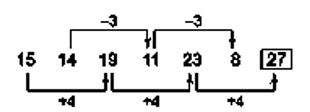
17. Arithmetic Progression (AP)
The progression of the form a, a + d, a + 2d, a + 3d, ...is known as an arithmetic progression with first term a and common difference d.
Then, nth term Tn = a + (n -1) d
Example: In series 359, 365, 371..., what will be the 10th term?
Solution:
The given series is in the form of AP.
Since, common difference i. e., d is same.
Here, a = 359 and d = 6
10th term = a + (n - 1) d= 359 + (10 - 1) 6= 359 + (9 x 6) = 413.
18. Geometric Progression (GP)
The progression of the form a, ar, ar2, ar3... is known as a GP with first term a and common ratio = r.
Then, nth term of GP Tn = arn-1
Example: In the series 7,14, 28…..., what will be the 10th term?
Solution: The given series is in the form of GP.
Since, common ration i. e., r is same.
Here, a = 7 and r = 2, 10th term = arn-1 = 7(2)10-1 = 7 x 29 = 3584
Examples:
1. 4, 8, 24, 60, 124, ?
Solution:
Series pattern
4 + 22 =8
8 + 42 = 24
24 + 62 = 60
60 + 82 = 124
124 + 102 =224
So, number is 224
2. 8, 12, 24, 46, 72, 108, 52. which one is odd man out?
Solution: 8 + 4 = 12
12 + 12 = 24
24 + 20 = 44
should come in place of 46
44 + 28 = 72
72+ 36 = 108
108 + 44 = 152
So, 44 should come in place of 46
- 13, 25, 40, 57, 79, 103, 130. What one is odd man out?
Solution:
Series pattern
13 + 12 = 25
25+ 15 = 40
40 + 18 = 58
should come in place of 57
58 + 21 = 79
79 + 24 = 103
103 + 27 = 130
- 13, 35, 57, 79, 911, ?
Solution:
Series pattern
The elements of the given series are the numbers formed by joining together consecutive odd numbers in order, i.e., 1 and 3, 3 and 5, 5 and 7, 7 and 9, 9 and 11, ...
Therefore, Missing term = Number formed by joining 11 and 13 = 1113
- 7, 9, 16, 25, 41, 68, 107, 173
Solution:
Series pattern
7+9 = 16;
9 + 16=25;
16 + 25 = 41;
25 + 41 = 66;
Should come in place of 68
41 + 66 = 107;
66 + 107 = 173
Clearly, 68 is wrong and will be replaced by 66.
10 Last two digits of a number
N/A
Last two digits of a number is generally the tens place and units place digit of that number.
Let the number be 1345, the last two digits of this number are 4 and 5.
Method to calculate last two digits of a product:
Let us take the product of two numbers P and Q (Let us take P is 1448 and Q is 2677).
Let u and v, respectively represent the digits in the ten’s place and one’s place of P and same way x and y respectively represent the digits in the ten’s place and one’s place of Q, then
- Unit’s digit of P x Q is given by the unit’s digit in the product of v and y results in more than 1-digit, excess digit will be carried over to the left. i.e., in 1448 x 2677, multiply 8 and 7 giving 56. So, 6 is unit’s digit and 5 goes as carry to step 2
- Next, we cross multiply u and y & x and v, then add the resulting products. i.e., in 1448 x 2677 => 4 x 7 + 8 x 7 = 28 + 56 = 84
- If a carry is generated in step 1, add that with the result obtained in step 2. i.e., 5 + 84 = 89
- The unit’s digit in the result obtained in step 3 forms the tens digit in the product of P and Q i.e., the units digit in 89 which is 9 becomes the tens digit of 1448 x 2677.
So, the last two digits of 1448 x 2677 is 9 and 6
Before finding last two digits, let us see the binomial theorem for calculations
(x + a) n = nC0 an + nC1 an – 1 x + nC2 an – 2 x2 + …... where nCr!})
Method of finding last two digits:
Let the number be in the form p q
Last two digits of numbers ending in 1
If p ends in 1, then p raised to q, ends in 1 and its digit is obtained by multiplying the tens digit in p with the unit’s digit in q.
Example: find the last two digits of 81236
Solution: Since the base 81 ends in 1, 81236 ends in 1 and the tens place digit is obtained from the unit’s digit in 8 x 6 which is 8. Hence the last two digits of 81236 are 8 and 1.
Last two digits of numbers ending in 3, 7 or 9
Convert the number by repeatedly squaring until we get the unit digit as 1, and then apply the same process of finding the last two digits of number with unit digit 1.
Alternative way:
- When p ends in 9 raised to the power q.
- Raise the base divide the exponent by 2
- We know that number ending in 9 and raised to the power 2 ends in 1
- As the base now ends in ‘1’ we can follow the method of finding last two digits of numbers ending in 1.
- When p ends in 3 raised to the power q.
- Raise the base divide the exponent by 4
- We know that number ending in 3 and raised to the power 4 ends in 1
- As the base now ends in ‘1’ we can follow the method of finding last two digits of numbers ending in 1.
- When p ends in 7 raised to the power q.
- Raise the base divide the exponent by 4
- We know that number ending in 7 and raised to the power 4 ends in 1
- As the base now ends in 1 we can follow the method of finding last two digits of numbers ending in 1.
Last two digits of numbers ending in 2, 4, 6 or 8
When p ends with the even numbers, we can find the last two digits of the number raised to the power q by this method
We know that 210 = 24
- (24) odd number always ends in 24
- (24) even number always ends in 76
- (76) number always ends in 76
Let us see an example:
236 = 230 x 26
= (210)3 x 26
= 243 x 26
= 24 x 64 (since 24oddnumber always ends in 24)
= 36(last two digits)
Last two digits of numbers ending in 0 or 5
- When any number with its unit digit as 0 raised to any power gives 00 in last two digits.
- When p ends with the 5, we can find the last two digits of the number raised to the power q by this method

Example: (65)265
Here ten’s digit of base is even and exponent is odd, last two digits of (65)265 is 2 and 5.
Examples:
- Find the last two digits of 5135
Solution: ending with 1
The unit digit is 1 itself
In the last two digits ten’s digit is given by taking product of ten’s digit in base and units digit in component i.e., 5 x 5 = 25
So, take 5 as ten’s digit
So, the last two digits are 51
- Find the last two digits of 17180
Solution: 17180 = (172)90
= (89)90 [last two digits of 172]
= (21)45 [last two digits of 892]
Here base is ending with 1
Ten’s digit of base is 2 and unit’s digit of power is 5.
 2 x 5 = 10 or 0
2 x 5 = 10 or 0
Therefore, last two digits of 17180 = 01
- Find the last two digits of 145157
Solution: here ten’s digit of base is even and exponent is odd
So, last two digits of 145157 will be 25
- Find the last two digits of 8244
Solution: 8244 can be written as 244 x 4144
244 = (210)4 x 24 = 244 x 16 = 76 x 16 = 16
Base is 1: 4144
4 x 4 = 16
So last two digits are 61
Therefore, last two digits of 8244 are 16 x 61 = 76
11 Factors of a number
N/A
Number of factors of a number:
If a number N can be represented as  where P1, P2, P3 are prime factors of N then number of factors of N can be found as (a + 1) * (b + 1) * (c + 1).
where P1, P2, P3 are prime factors of N then number of factors of N can be found as (a + 1) * (b + 1) * (c + 1).
50 = 2 * 52, so number of factors of 50 = (1+1) * (2+1) =6. Which are 1, 2, 5, 10, 25and 50.
These are various combinations of the prime factors 2, 5 and 5.
- Take 544; By using the divisibility rules we can easily see 2, 4, 8 are factors of 544. Take the highest power of each prime (here 8) for division.
544/8 = 68, divisible by 2, 4 and 17.
Take the highest power of each prime
68/ (4 * 17) = 1.
544 = 8 * 4 * 17 = 25 * 17
Number of factors = 6 * 2 = 12
- Take 1080; Applying divisibility rules, we get 2, 3, 4, 5, 8, 9 divides the number. Take the highest power of each prime (here 8, 5, 9) for division.
1080 / (8 * 5 * 9) = 3 (can stop dividing here as we got a prime, no need to write an obvious step to get unity by dividing with the same prime!)
1080 = 8 * 5 * 9 * 3 = 23* 33* 5
Number of factors = (3 + 1) * (3 + 1) * (1 + 1) = 4 * 4 * 2 = 32
Sum of factors of a number
Let’s take an example: 40 = 23 * 5,
number of factors = (3 + 1) * (1 + 1) = 4 * 2 = 8.
Sum of the factors = 1 + 2 + 4 + 8 + 5 + 10 + 20 + 40 = 90
This is same as (20 + 21 + 22 + 23) (50 + 51) = 15 * 6 = 90.
- Find the sum of all the powers of each prime numbers, starting from 0 to the highest power contained in the standard form. Product of all such sums will give us the sum of the factors.
- We have already seen that 1080 = 23 * 33 * 5
- In this case, sum of the factors will be (20 + 21 + 22 + 23) * (30 + 31 + 32 + 33) * (50 + 51) = 15 * 40 * 6 = 3600
This also explains how we find the numbers of factors. It is the product of the number of factors in each bracket (here, 4 * 4 * 2 = 32).
Product of factors of a number
N = 
Then the product of all the factors of N = N (a + 1) (b + 1) (c + 1)/2
e.g., 50 = 2 * 52;
Product of all factors of 50 = 50 (6) / 2 = 503
Number of odd factors
- To get the number of odd factors, ignore the powers of 2.
- Take 1080, 1080 = 23 * 33 * 5
- Number of odd factors of 1080 = (3 + 1) * (1 + 1) = 4 * 2 = 8, here we considered only the powers of 3 and 5 to get the number of odd factors.
Sum of odd factors of a number
- Sum of factors of 1080 = (20 + 21+ 22+ 23) * (30+ 31+ 32+ 33) * (50+ 51), where each term in the expansion represents a factor of 1080.
- We need at least one 2 to get an even factor. Remove all terms that has a 2 in it and we will remove all even factors.
- Even factors in 1080 are 21, 22and 23.
- The only power of 2 remaining is 20 (=1), which can be removed as it will not make any impact. Means, you ignore all powers of 2 to get the sum of all odd factors.
- Now we need to remove even factors from the expression so that the result will be the sum of all odd factors.
- Sum of odd factors of 1080 = (30+ 31+ 32+ 33) * (50+ 51) = 240
Number of even factors of a number
Let a number is of the form, N = 2a x  ...
...
- Then Number of even factors of N = a * (b + 1) * (c + 1) …
For e.g., 1080 = 23 * 33 * 5
Number of even factors of 1080 = 3 * (3 + 1) * (1 + 1) = 24
Sum of even factors of a number
- To get the sum of the even factors we need to ensure that all the terms in the expression for the sum of factors are even.
- All members in the 2’s bracket except 20 will give an even number.
- Remove 20 from the group and that’s all it takes!
For e.g., 1080 = 23 * 33 * 5
Sum of even factors of 1080 = (21 + 22 + 23) * (30 + 31 + 32 + 33) * (50 + 51) = 3360
Other conditions
What if we are asked to find the sum and number of factors of 1080 which are divisible by 15?
- We don’t have to use anything else other than the logic we used for odd and even factors. We know number of terms in the expression is the number of factors.
- So, when a condition is given, number of factors is the number of terms in the expression satisfying the given condition and considers only those factors to get the sum.
- 1080 = (20 + 21+ 22+ 23) * (30+ 31+ 32+ 33) * (50+ 51)
- Now 15 = 3 * 5, so we need to ensure that every term in the expression has a 3 and 5 in it. Now look at the bracket of 3 and find the terms that don’t yield a 3 in the expression.
Also check for bracket of 5 for the terms that don’t give us a 5. 30and 50are the culprits. Remove those entries and we get the expression we need.
Examples:
- Find Sum of factors of 1080 which are divisible by 15
= (20 + 21+ 22+ 23) * (31+ 32+ 33) * (51)
= 15 * 39 * 5 = 2730
2. Find the sum of factors of 544 which are perfect squares
- 544 = 8 * 4 * 17 = 25 * 17
- Our expression, (20+ 21+ 22+ 23+24 +25) (170+171)
Ensure all terms in the expression satisfy the condition, perfect squares.
- So, each term in the expression should be of even power. We have to remove all odd powers in the expression
- Required sum is (20+ 22 +24) (170) = 21.
- Number of factors = 3 * 1 (number of terms in each bracket) = 3.
- For the number 1000 find the below values
- The number of divisors = (3 + 1) * (3 + 1) = 16 (as 1000 = 23* 53)
- The product of divisors = 100016/2 = 10008
- The sum of divisors= (20+ 21+ 22+ 23) (50 + 51+ 52+ 53) = 2340
- The sum and number of odd divisors
 we need to remove all factors that can yield a 2 from the two’s bracket.
we need to remove all factors that can yield a 2 from the two’s bracket.
 Sum of odd factors = (20) * (50+ 51+ 52+ 53) = 156
Sum of odd factors = (20) * (50+ 51+ 52+ 53) = 156
 Number of odd factors = 1 * 4 = 4
Number of odd factors = 1 * 4 = 4
- The sum and number of even divisors
 We need to remove all factors that cannot yield a 2 from the two’s bracket (which is 20)
We need to remove all factors that cannot yield a 2 from the two’s bracket (which is 20)
 Sum of even factors = (21+ 22+ 23) (50+ 51+ 52+ 53) = 2184
Sum of even factors = (21+ 22+ 23) (50+ 51+ 52+ 53) = 2184
 Number of even factors = 3 * 4 = 12
Number of even factors = 3 * 4 = 12
- The sum and number of divisors which are perfect squares
 We need to remove all the factors which are not perfect squares
We need to remove all the factors which are not perfect squares
 Sum of factors which are perfect squares = (20+ 22) (50+ 52) = 130
Sum of factors which are perfect squares = (20+ 22) (50+ 52) = 130
 Number of factors which are perfect squares = 2 * 2 = 4
Number of factors which are perfect squares = 2 * 2 = 4
- The sum and number of divisors which are not perfect squares
 Total sum – sum of divisors which are perfect squares = 2340 – 130 = 2210
Total sum – sum of divisors which are perfect squares = 2340 – 130 = 2210
 Total factors – number of divisors which are perfect squares = 16 – 4 = 12
Total factors – number of divisors which are perfect squares = 16 – 4 = 12
- The sum and number of divisors which are divisible by 125
 We need to remove all the factors that cannot yield 125 (125 = 53)
We need to remove all the factors that cannot yield 125 (125 = 53)
 Sum of factors which are divisible by 125 = (20+ 21+ 22+ 23) (53) = 1875
Sum of factors which are divisible by 125 = (20+ 21+ 22+ 23) (53) = 1875
 Number of factors which are divisible by 125 = 4 * 1 = 4
Number of factors which are divisible by 125 = 4 * 1 = 4
- The sum and number of divisors which are divisible by 100
 100 = 22 * 52
100 = 22 * 52
 We need to remove all factors that cannot yield a 22 from two’s bracket and also remove all factors that cannot yield a 52 from five’s bracket.
We need to remove all factors that cannot yield a 22 from two’s bracket and also remove all factors that cannot yield a 52 from five’s bracket.
 Sum of factors which are divisible by 100 = (22+ 23) (52+ 53) = 1800
Sum of factors which are divisible by 100 = (22+ 23) (52+ 53) = 1800
 Number of factors which are divisible by 125 = 2 * 2 = 4
Number of factors which are divisible by 125 = 2 * 2 = 4









